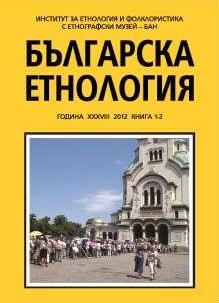Пророкът Сулайман и царицата на Шеба: литературни и фолклорни интерпретации
The Prophet Sulayman and the Queen of Sheba: Literary and Folklore Interpretations
Author(s): Galina LozanovaSubject(s): Anthropology
Published by: Институт за етнология и фолклористика с Етнографски музей при БАН
Summary/Abstract: The fascinating story of the encounter of the Prophet Sulayman with the Queen of Sheba Bilqis is one of the most popular plots in the oral Bulgarian Muslim tradition. Gener¬ally, they are based on Islamic literary sources and hence – on the Islamic interpretation in post-Quranic exegesis of the images of Sulayman and Bilqis. Sulayman is represented as a typical prophetic figure, a king of the world and a wise man, endowed by God with supernatu¬ral powers; while Bilqis, being his worthy opponent in wisdom and temporal power, is also a pagan woman-ruler with a demonic “non-human” descent, as she is half jinn. The main theme of the story is her transformation and final submission to Sulayman. The oral stories about Sulayman and Bilqis are told in two main versions. One of them strictly follows the Quranic account, and is principally a story of Sulayman’s prophethood and his strife to convert to monotheism a pagan woman-ruler. The second version includes some of the post-Quranic literary “embellishments” of the story, but it has also some typically “folkloric” distinguishing features: the predominance of the marital theme in the relations be¬tween Sulayman and Bilqis and the introduction of the plot *989* (“Palace of birds’-bones”) which hardly belongs to the story of Sulayman and the Queen of Sheba but may be originally belongs to stories of Solomon cycle in Bulgarian folklore.
Journal: Българска етнология
- Issue Year: 2012
- Issue No: 1-2
- Page Range: 87-103
- Page Count: 17
- Language: Bulgarian

